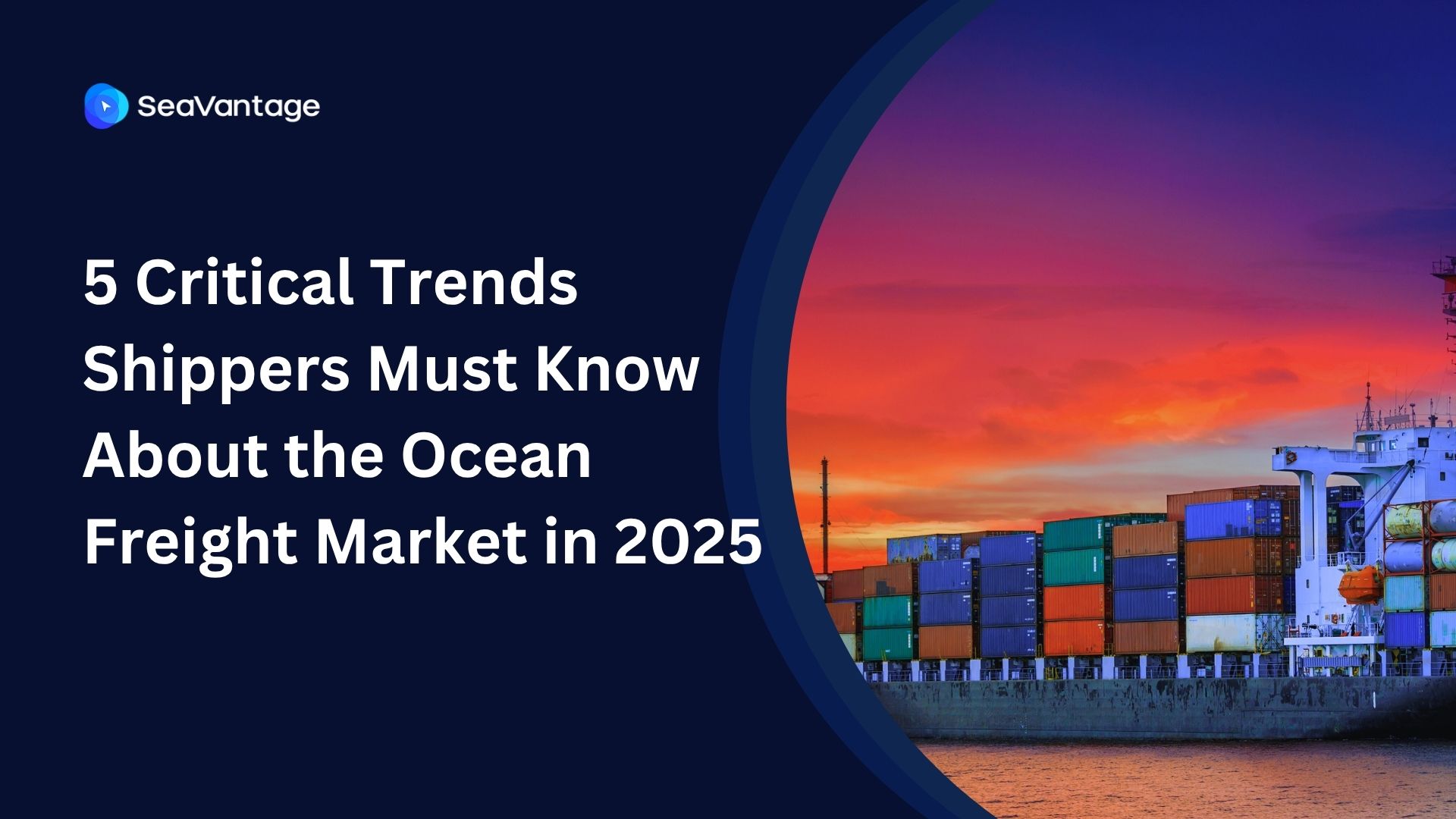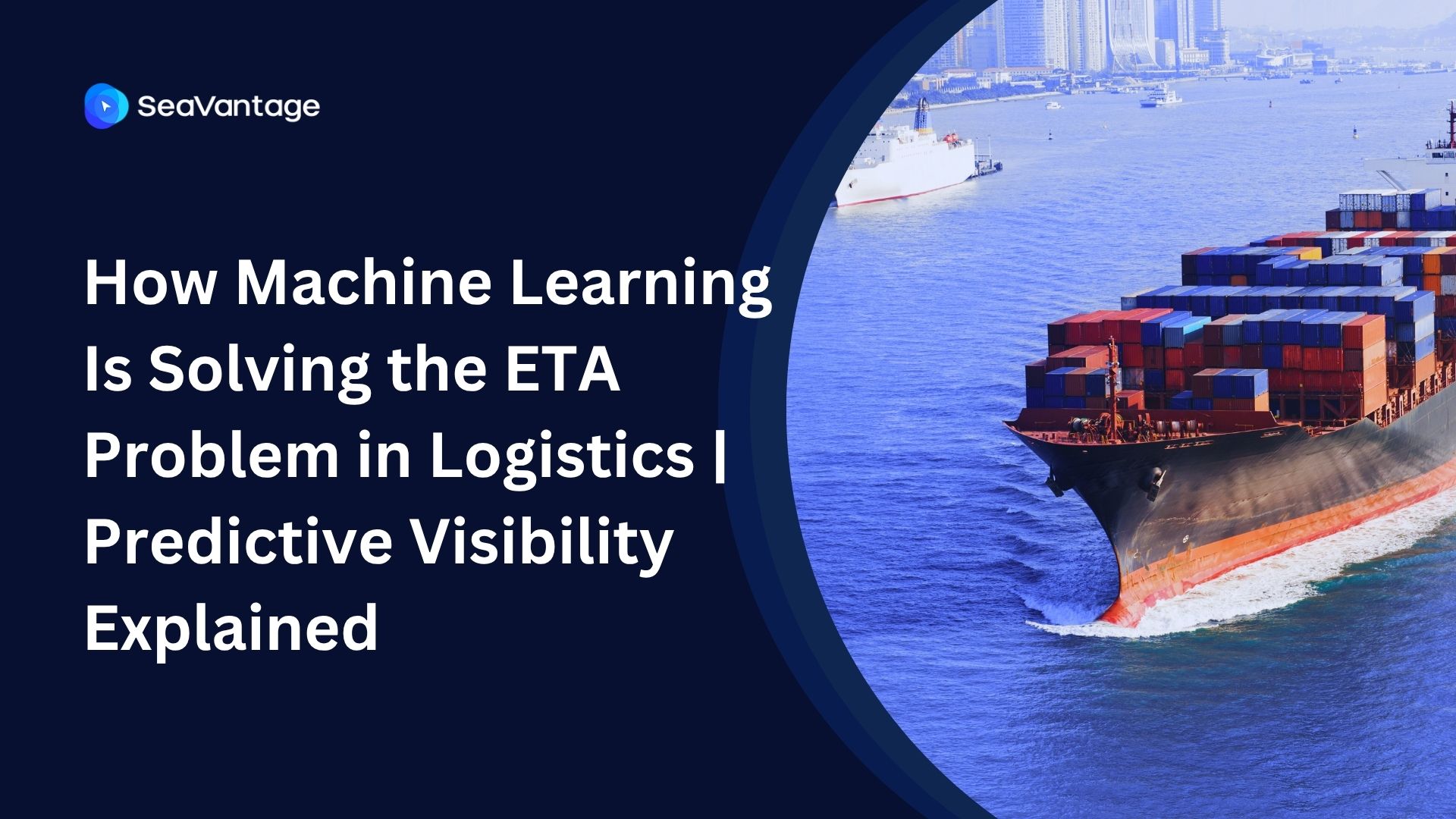5 Critical Trends Shippers Must Know About the Ocean Freight Market in 2025
.jpg)
In today’s global freight market, surface-level headlines often mask a far more complex reality. While some indicators may hint at normalization, the strategic landscape is being reshaped by regional volatility and policy-driven uncertainty. This analysis cuts through the noise, distilling the five most critical developments that demand the attention of supply chain leaders right now.
1. The Suez Canal "Reopening" Isn't What It Seems
Recent news of two large CMA CGM vessels, the CMA CGM BENJAMIN FRANKLIN and CMA CGM ZHENG HE, transiting the Suez Canal created a stir, but this does not signal a broad return to normal for major services. These were ad-hoc transits on the FAL1 service, and carrier schedules confirm that future sailings on this same loop are still routed around the Cape of Good Hope.
The reality is more nuanced and carrier-specific. While the main East-West services continue to bypass the canal, Ocean Alliance has been regularly using Suez for its MED5/BEX2 and MEDEX services, and other carriers like Maersk are also using the route selectively. For shippers, the takeaway is clear: a full-scale return requiring months of network redesign is not imminent. Instead, the market is operating on a complex, service-by-service calculation of risk and reward.
Recent transits do not signify a return to “normal”.
2. A Global Game of Whack-a-Mole: Where Congestion is Flaring Up (and Cooling Down)
Port performance remains highly fragmented, with significant bottlenecks flaring up in some regions while others operate with surprising fluidity.
Here are the key congestion hotspots demanding attention:
- Europe: Severe congestion in Rotterdam is causing vessel wait times of up to 7 days, forcing diversions and creating downstream schedule disruptions. Antwerp and Hamburg are also experiencing significant delays.
- Asia: Heavy berth congestion is impacting Ningbo due to maintenance and vessel bunching. Port Klang faces sporadic delays, while Vung Tau is struggling with heavy yard utilization.
- North America: Emergency dredging in Houston is causing 3-day vessel waits, and inland rail ramps are becoming congested due to pick-up delays.
In contrast, several key areas are currently operating smoothly:
- The US East Coast ports report no delays, with fluid rail operations.
- LA/LB rail dwell has improved to an average of 2-3 days.
- The Panama Canal is operating without issues.
This fragmented operational picture underscores a critical strategic imperative: proactive monitoring of these regional choke points is essential for maintaining network flexibility.
3. U.S.-China Trade Tensions: A Fragile Truce Brings Temporary Relief
After a period of escalating retaliatory fees, the U.S. Section 301 investigation into China's maritime sectors has been officially suspended for one year following successful negotiations.
This development provides temporary financial relief to impacted carriers and removes an immediate cost pressure from the market. However, the threat of renewed action will undoubtedly remain a key part of carriers' "cost-benefit analysis" for future vessel deployment and network design. While this suspension is a positive step toward stability, shippers must recognize that the underlying trade conflict has only been paused, not resolved, leaving a fragile truce in its place.
4. The Transpacific Market Walks a Tightrope
The Transpacific (TPEB) trade lane is currently defined by a delicate supply and demand balance. With post-Golden Week blank sailings now concluded, supply has returned to normal, with average weekly capacity deployment holding at 82%. Recent General Rate Increases (GRIs) in October and November saw mixed success, driven more by cost recovery efforts than by a fundamental surge in demand.
Carriers now face a strategic dilemma: weighing a potential demand increase from China tariff reductions against the risk of eroding rate levels. Projections for the coming month signal a rapidly tightening market across all major gateways. Port utilization is forecast to climb to 85% in the PSW, 88% in the PNW, and a significant 91% on the EC/Gulf coast by December 2025, reinforcing the precarious balance of the entire trade lane.
5. Smart Shippers Are Rewriting the Playbook
The market is no longer governed by traditional seasonal demand cycles but by political and policy-driven disruptions. This new paradigm requires a more agile and strategic approach to supply chain management.
Forward-thinking shippers are implementing these strategies to navigate the current environment:
- Manage Duties Strategically: Use bonded warehouses and Foreign Trade Zones (FTZs) to store goods without immediate duty payments, maintaining supply chain velocity while mitigating cash flow impacts from tariffs.
- Diversify Sourcing: Explore alternative trade lanes and sourcing from regions like Southeast Asia to build long-term resilience and offset rising production costs in China.
- Look Beyond a Single Mode: Consider a sea-air model, routing goods through hubs like Dubai or Singapore, to find the optimal balance between cost and speed in a volatile rate environment.
- Plan for Higher Costs: Proactively build longer customs clearance times and higher overall landed costs per unit into financial forecasting and product pricing to protect margins.
Conclusion: What's Your Next Move?
The ocean freight market is defined by a new reality of regional volatility, fragile political truces, and a precarious supply-demand balance. In this environment, success hinges less on predicting traditional cycles and more on embedding strategic agility into the core of your supply chain. Resilient, adaptable logistics networks are no longer an advantage; they are the price of admission.
In a market defined by unpredictability, how are you building agility into your logistics strategy for 2026?
2025년 9월, 주요 글로벌 항만에서 어떤 운송사가 가장 긴 선박 체류 시간을 기록했는지 확인해보세요. 트렌드를 비교하고, 지연을 파악하며, 전체 항만 데이터를 통해 운송 전략을 최적화할 수 있습니다.
2025년 8월, 주요 글로벌 항만에서 어떤 운송사가 가장 긴 선박 체류 시간을 기록했는지 확인해보세요. 트렌드를 비교하고, 지연을 파악하며, 전체 항만 데이터를 통해 운송 전략을 최적화할 수 있습니다.
2025년 7월, 주요 글로벌 항만에서 어떤 운송사가 가장 긴 선박 체류 시간을 기록했는지 확인해보세요. 트렌드를 비교하고, 지연을 파악하며, 전체 항만 데이터를 통해 운송 전략을 최적화할 수 있습니다.
Get the latest November 2025 ocean freight insights. Learn the five market shifts shaping carrier strategy, congestion risks, trade tensions, and shipper planning.
Discover how machine learning is fixing the billion-dollar ETA problem by delivering accurate, predictive visibility for global supply chains.
Explore October 2025 global port dwell time data. See which ports and carriers led in efficiency across Antwerp, Busan, Long Beach, Rotterdam, and Singapore.



.svg)







.png)